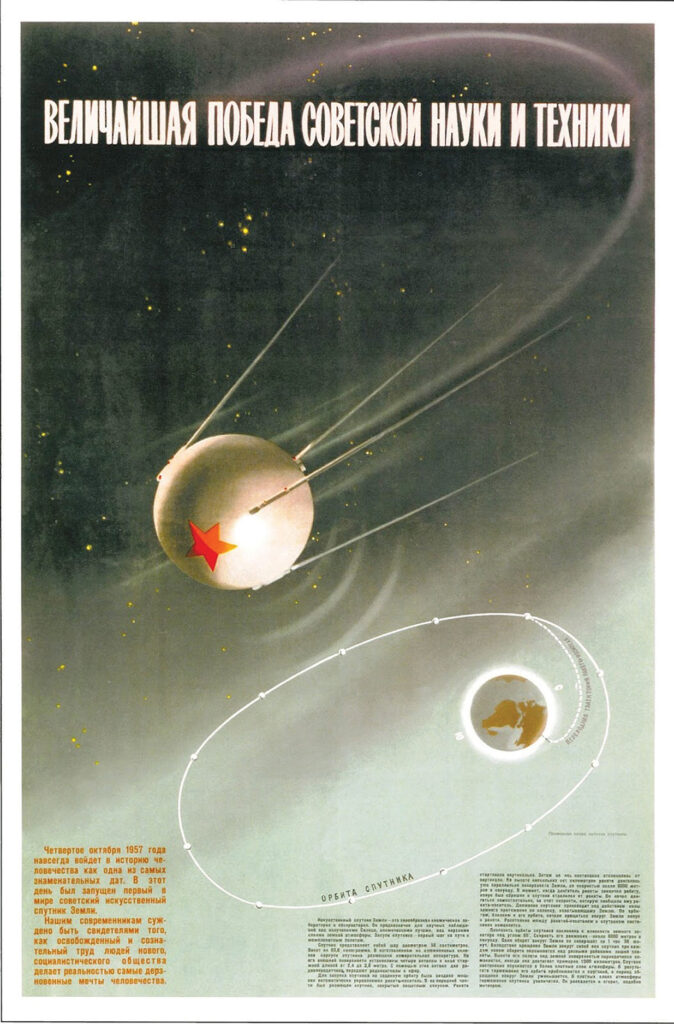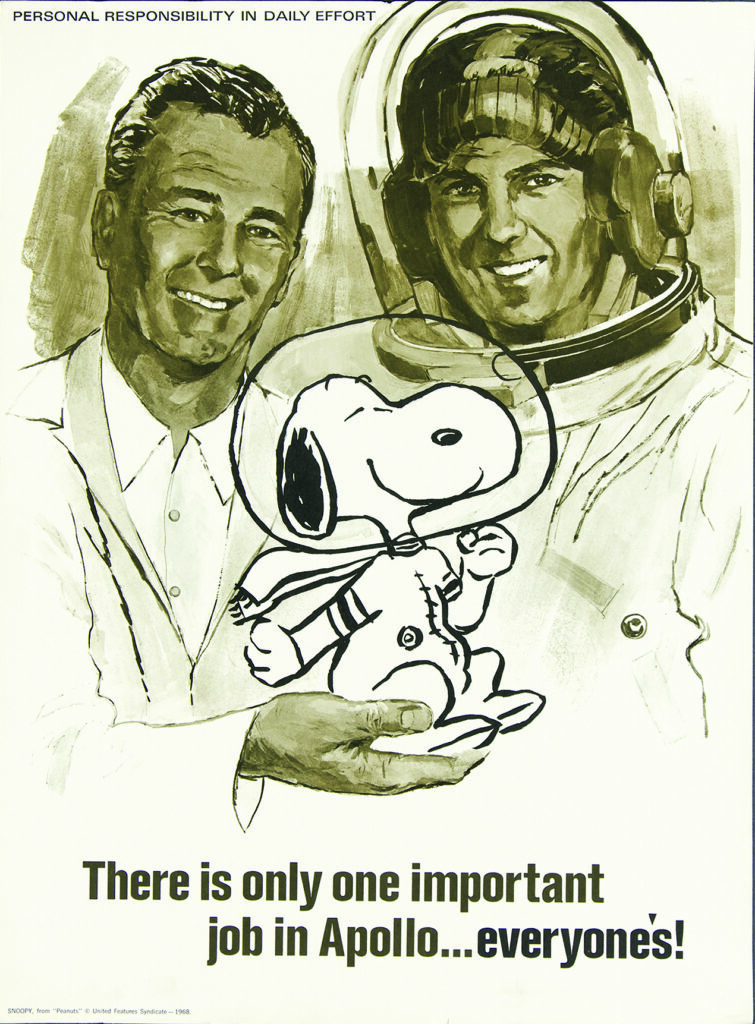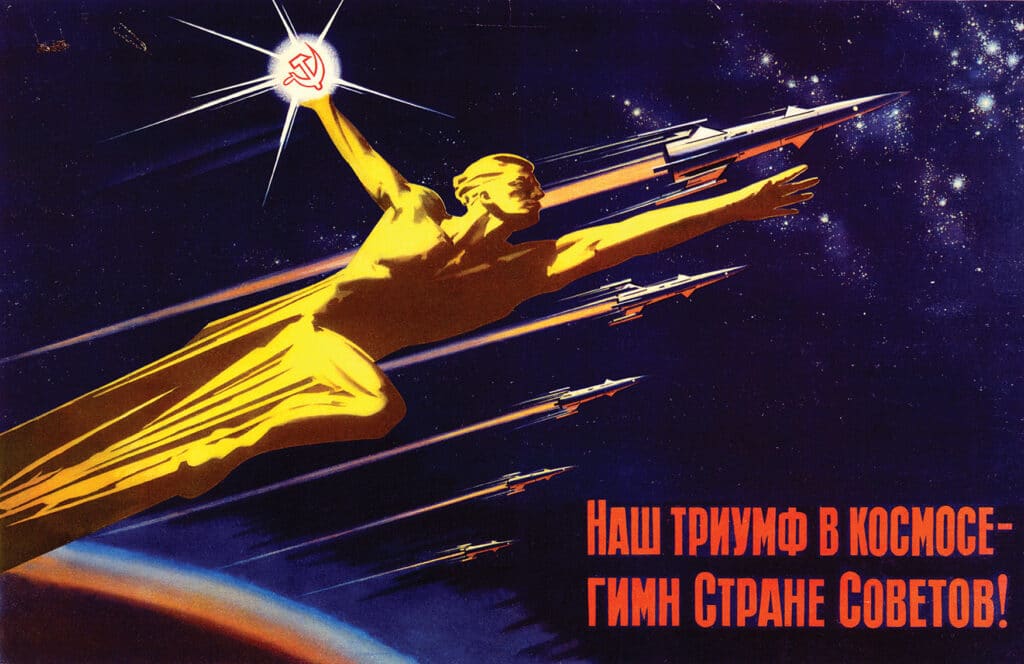Visions of the Space Frontier
Posters from China, the Soviet Union, and the United States.
Chinese citizens cheer for a Soviet rocket in a poster from 1957, reflecting the friendly relationship that would come to an end only a few years later. A Prometheus-like figure reaches for the cosmos in a Soviet poster with one hand while holding a hammer and a sickle in the other. Charles Shultz’s beloved icon Snoopy—the official NASA spaceflight safety mascot—appears in American posters, adding an element of familiarity, reassurance, and cuteness in an effort to appeal to young people and the broader public. These are just a sampling of the space imagery used by China, the Soviet Union, and the United States during the mid-twentieth century.



Space iconography was a persuasive communications tool throughout the space race. Posters played an important role, especially at a time before ubiquitous home televisions, personal computers, and smartphones. The posters’ purpose was to persuade, inform, and instill national pride for each space program without giving away any closely guarded technological secrets. Posters efficiently and effectively delivered their messages, using symbols understood by millions. Graphically bold, aesthetically pleasing, and whimsical, they reflect the styles and ideologies of their cultures and era.



This poster depicts three astronauts from Apollo 7: Walter “Wally” Schirra, Donn F. Eisele, and R. Walter “Walt” Cunningham. This poster was designed to remind NASA employees and contractors to be careful while shipping spacecraft parts.
